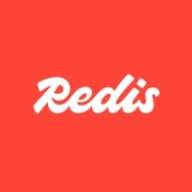

Redis and Qdrant are both key players in the database management space. Redis appears to have an edge due to its versatility and robustness, making it suitable for a broad range of business needs.
Features: Redis is renowned for its in-memory data structure store that supports high performance and scalability. Its data persistence capabilities enhance application performance, while specific commands offer additional operational improvements. Qdrant's focus on vector similarity search and machine learning-ready indexing stand out, providing unique strengths in processing and analyzing complex data patterns.
Ease of Deployment and Customer Service: Redis facilitates seamless integration with various applications and offers comprehensive customer support, ensuring quick deployment. Qdrant’s specialized nature can make deployment more challenging, although it prioritizes efficient machine learning processes. Redis’s broader compatibility eases integration, while Qdrant emphasizes innovative functionalities in its customer service approach.
Pricing and ROI: Redis incurs higher initial setup costs but offers significant long-term ROI due to its broad utility and efficient scaling capabilities. Qdrant features a lower initial cost, presenting a cost-effective solution for specialized use cases centered around machine learning. Redis’s pricing is validated through its extensive application range, whereas Qdrant’s ROI aligns with industry-specific needs, offering targeted financial benefits in niche applications.
| Product | Market Share (%) |
|---|---|
| Redis | 5.2% |
| Qdrant | 8.9% |
| Other | 85.9% |
| Company Size | Count |
|---|---|
| Small Business | 11 |
| Midsize Enterprise | 3 |
| Large Enterprise | 8 |
Qdrant is a powerful tool for efficiently organizing and searching large volumes of data. It is particularly useful for tasks such as data indexing, similarity search, and recommendation systems.
With fast and accurate results, it is suitable for various applications including e-commerce, content management, and data analysis. Users appreciate Qdrant's efficient search capabilities, high performance, and ease of use.
Its quick and accurate retrieval of relevant information allows for easy navigation and analysis of large datasets.
The intuitive interface and straightforward setup process make it accessible to users with varying levels of technical expertise.
Redis offers high-speed, in-memory storage, renowned for real-time performance. It supports quick data retrieval and is used commonly in applications like analytics and gaming.
Renowned for real-time performance, Redis delivers high-speed in-memory storage, making it a favorite for applications needing quick data retrieval. Its diverse data structures and caching capabilities support a broad array of use cases, including analytics and gaming. Redis ensures robust scalability with master-slave replication and clustering, while its publish/subscribe pattern renders it reliable for event-driven applications. The solution integrates smoothly with existing systems, minimizing performance tuning needs. Although documentation on scalability and security could be improved, Redis remains cost-effective and stable, commonly utilized in cloud environments. Enhancing integration with cloud services like AWS and Google Cloud and refining GUI may improve usability.
What are the key features of Redis?Redis finds application across industries for tasks like caching to improve application performance and speed, minimizing database load. It enables real-time processing for session storage, push notifications, and analytics. As a messaging platform, Redis handles high traffic and supports replication and clustering for cross-platform scalability.
We monitor all Vector Databases reviews to prevent fraudulent reviews and keep review quality high. We do not post reviews by company employees or direct competitors. We validate each review for authenticity via cross-reference with LinkedIn, and personal follow-up with the reviewer when necessary.